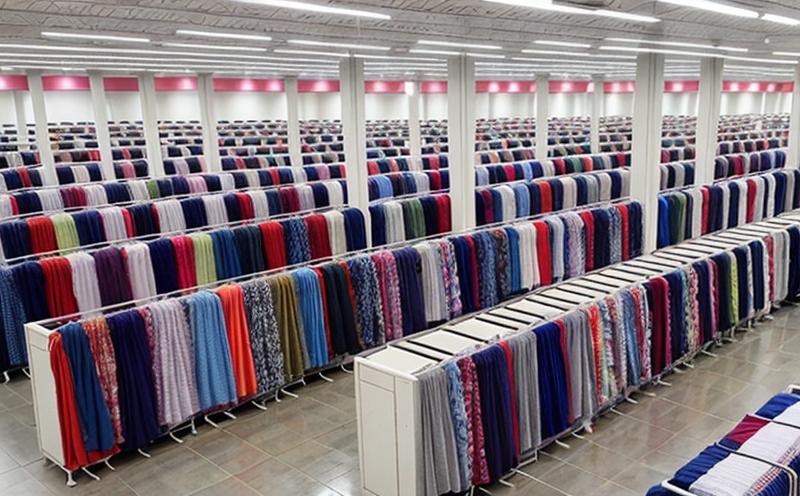ASTM D737 Air Permeability Testing of Export Textiles
The ASTM D737 test method measures air permeability through textile fabrics. This is critical for ensuring textiles meet import standards and specifications set by various countries, particularly in the export sector.
Textile air permeability testing determines how readily air can pass through a fabric under specific conditions of pressure, which reflects its breathability. Breathable fabrics are essential for comfort during wear, especially in hot or humid environments. This test is integral to the quality control and compliance processes of textile manufacturers exporting their products.
The ASTM D737 apparatus consists of a test chamber that creates a controlled environment where air pressure can be precisely regulated. A fabric sample is placed between two plates within this chamber, creating an area through which air can flow freely. The difference in air pressure across the sample determines its permeability.
Once the test parameters are set and the specimen prepared according to ASTM D737 guidelines, the apparatus measures the volume of air that passes through the fabric per unit time under a specified differential pressure. This measurement is crucial for assessing whether the textile meets the export requirements regarding breathability, which vary by country.
The acceptance criteria for ASTM D737 tests are based on the specific standards and specifications set by importing countries or international trade agreements. These criteria ensure that exported textiles perform as expected in real-world conditions. For example, fabrics intended for use in warm climates might have higher breathability requirements compared to those used in colder regions.
Failure to meet these standards can lead to non-compliance issues, causing delays at ports of entry or even rejection of the entire shipment. This can result in significant financial losses and reputational damage for manufacturers. Therefore, precise testing according to ASTM D737 is not just a formality but a critical step in ensuring successful export compliance.
The test setup also includes an air flow measurement system that accurately quantifies the airflow through the fabric under controlled conditions. This ensures consistent and reliable results, which are essential for maintaining quality control throughout the manufacturing process and during inspections by regulatory bodies.
Applied Standards
The ASTM D737 test method is widely recognized in the textile industry as a standard for measuring air permeability. This test adheres to international standards such as ISO 9237, which also provides guidelines for determining the resistance of fabrics to air flow.
Compliance with these standards ensures that exported textiles meet the required specifications set by importing countries and international trade agreements. These standards provide a uniform framework for testing, ensuring consistency across different laboratories worldwide.
The use of ASTM D737 allows manufacturers to verify that their products will perform as expected in various environmental conditions, which is crucial for maintaining market confidence and building long-term relationships with trading partners.
Benefits
Conducting ASTM D737 air permeability testing offers numerous benefits to textile manufacturers looking to ensure compliance and quality in their export products. These include:
- Increased Market Access: Meeting the required standards ensures that textiles can be exported without delays or rejections at ports of entry.
- Enhanced Quality Control: ASTM D737 testing provides a reliable way to monitor and maintain consistent fabric quality throughout production.
- Promotes Compliance: By adhering to international standards, manufacturers can avoid non-compliance issues that could lead to legal penalties or trade disputes.
Industry Applications
| Application | Description |
|---|---|
| Sports Apparel | Breathable fabrics are essential for athletes to remain comfortable during intense physical activity. |
| Outdoor Gear | High breathability ensures that outdoor clothing remains dry and comfortable in humid conditions. |
| Clothing for Hot Climates | Breathable fabrics help keep the wearer cool and prevent overheating. |
| Medical Textiles | Maintaining air permeability is crucial in medical textiles to ensure patient comfort and hygiene. |
| Automotive Fabrics | Breathable automotive fabrics enhance the comfort of passengers by regulating internal temperature. |





